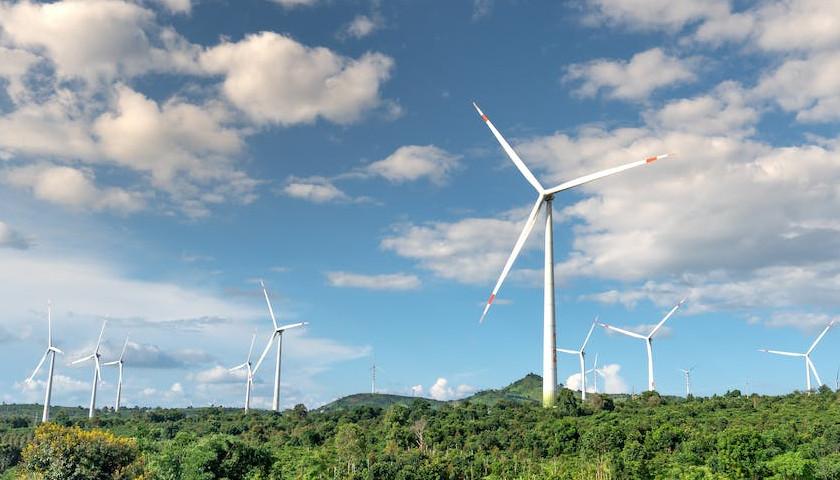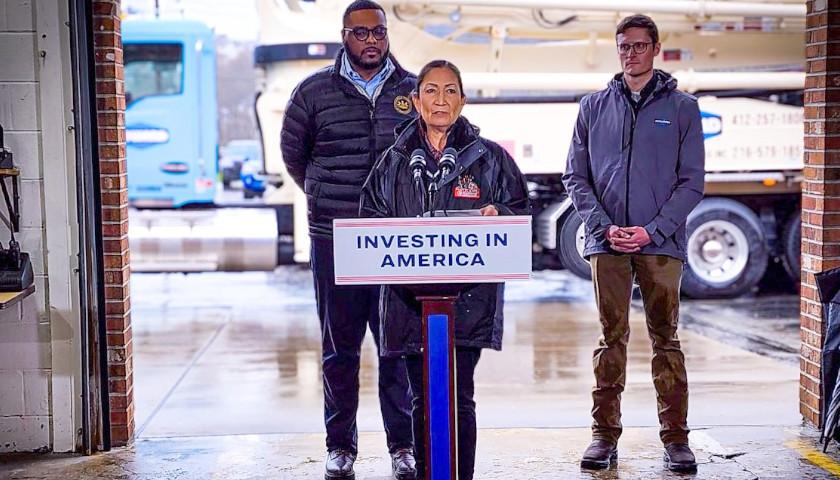by Lauren Jessop
A proposed wind farm has given rise to concerns by state military officials who say the windmills pose a threat to the safety of its training operations.
The windmills would be located within the buffer zone surrounding Ft. Indiantown Gap and lawmakers want to require permission from federal authorities before permits are granted to install them.
The project, known as Anthracite Ridge, would sit approximately 15 miles north of the military base and within its flight paths.
In a memorandum, State Rep. Zachary Mako, R-Slatington, cited his experience as a helicopter pilot with the Pennsylvania National Guard, saying he has flown countless missions out of Fort Indiantown Gap, also known as “the Gap”.
Many people may be aware that the Gap serves as headquarters for the National Guard, he said, but it is perhaps less well known that it serves as a training facility for all branches of our nation’s armed forces, as well as law enforcement and homeland defense professionals.
The base hosts the Eastern Aviation Training School – one of only two aviation training centers for the Army and Air National Guard within the continental United States. In recent years, it has become the busiest National Guard training center in the country.
“The main concern is safety,” said Maj. Travis Mueller, Pennsylvania National Guard public affairs officer, in an email to The Center Square.
“The Pennsylvania National Guard values our partnerships with the local community and businesses that seek economic opportunities,” he said. “However, the proposed windmills would create less room for our helicopter crews to safely maneuver in the area and increase the risk of accidents.”
Mueller said their flight crews regularly conduct night-time operations, and the windmills would make already dangerous training even riskier.
He added that officials “will continue working … to seek mutually beneficial options to support the development of green energy within the commonwealth while preserving valuable training space.”
The approval process for such projects is a complicated one, involving many local, state, and federal entities.
Neil Shader, communications director for the state Department of Environmental Protection, told the Center Square their involvement in this project is somewhat limited and would cover earth moving activities where the turbines would be sited, including management of erosion and sediment runoff from stormwater on the site.
On the federal level, Department of Defense spokeswoman Kelly Flynn told The Center Square the DoD has no direct authority, but participates in siting reviews with other federal agencies to navigate the permitting process.
She said that while the department does not comment on pending legislation, they generally encourage states to include impacts to military testing, training, and operations in their siting decisions.
According to Kelly, the majority of wind projects do not impact military operations, but for the small number that raise potential compatibility challenges, DoD works to find solutions that enable development while preserving the department’s ability to test, train, and operate.
House Bill 1323 has been referred to the Veterans Affairs and Emergency Preparedness Committee for consideration.
– – –
Lauren Jessop is a contributor to The Center Square.








